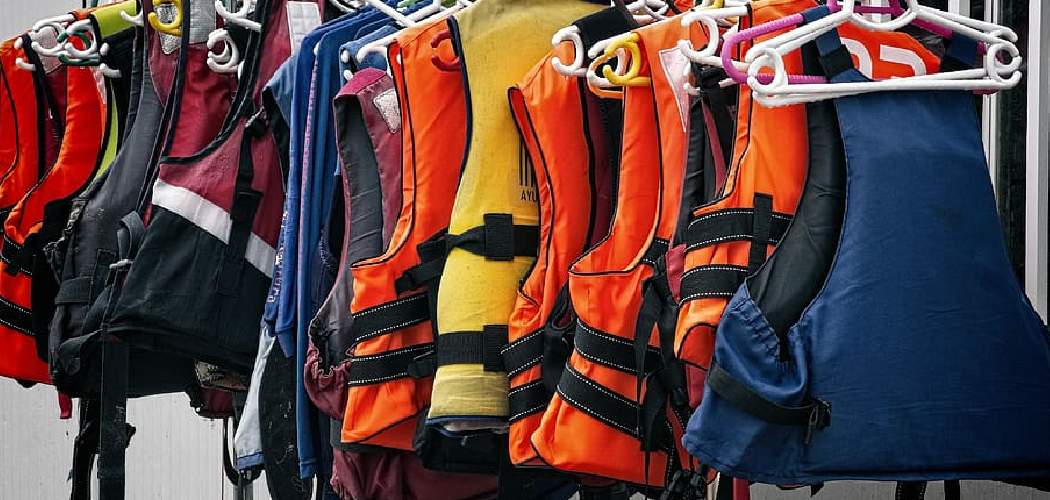Are you planning a boat trip or a day at the beach? Safety equipment, especially a life jacket, is essential.
A life jacket is essential safety equipment designed to keep individuals afloat and reduce the risk of drowning in water-related activities. Whether you are boating, kayaking, swimming, or participating in other water sports, knowing how to use a life jacket properly is crucial for ensuring your safety. By learning the correct way to wear, adjust, and maintain this vital gear, you can maximize its effectiveness and stay safe in various aquatic environments.
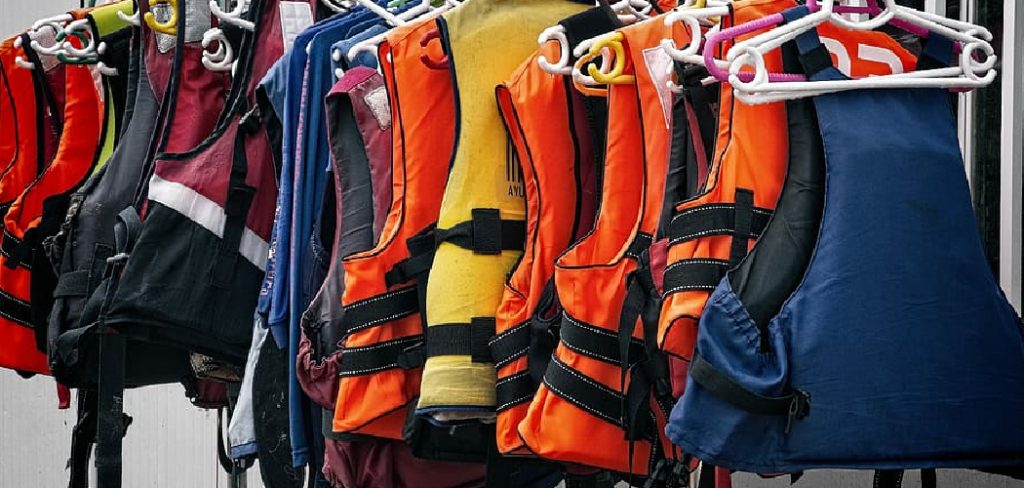
This guide on using a life jacket provides a step-by-step overview of using a life jacket correctly. Let’s dive in!
What Will You Need?
Before heading out on the water, ensure you have a life jacket that fits properly and is Coast Guard-approved. Choosing the right type of life jacket for your activity is important – whether it be a snug-fitting vest for waterskiing or a more relaxed fit for kayaking.
Some other helpful items to have on hand when engaging in water activities are:
- A whistle or other signaling device
- A waterproof phone case
- Sunscreen and sunglasses
- Water and snacks
Remember, even if you are a strong swimmer, wearing a life jacket can significantly increase your chances of survival in an emergency.
10 Easy Steps on How to Use a Life Jacket
Step 1. Choose the Right Life Jacket
When selecting a life jacket, it’s essential to consider the activity you’ll be engaging in and ensure the jacket meets safety standards. Check for a proper fit by trying it on— it should be snug but not restrictive, allowing you to move comfortably. Ensure it is U.S. Coast Guard-approved and appropriate for your weight and chest size, which is typically indicated on the label.

Additionally, different types of life jackets are designed for specific water activities, so select one that matches your needs, whether for boating, kayaking, or water skiing. A well-fitted and appropriate life jacket can make all the difference in staying safe on the water.
Step 2. Inspect the Life Jacket
Before using a life jacket, thoroughly inspect it to ensure it is in good condition. Check for any visible signs of wear and tear, such as frayed straps, torn fabric, or damaged buckles. Make sure all fasteners, zippers, and straps are functioning correctly and can be securely tightened. Look for any signs of mold or mildew, as these could weaken the integrity of the material.
If the life jacket has foam padding, ensure it is intact and not compressed or misshapen. Always examine the label to confirm it remains legible and that the jacket is still certified for safety by the U.S. Coast Guard.
Step 3. Adjust the Straps
Properly adjust the straps to ensure the life jacket fits snugly and securely. Begin by loosening all straps before putting on the coat. Once it is on, tighten the straps evenly, starting at the waist and working up to the shoulders. Make sure the jacket feels secure but not overly tight, as it should allow for comfortable movement and proper breathing.
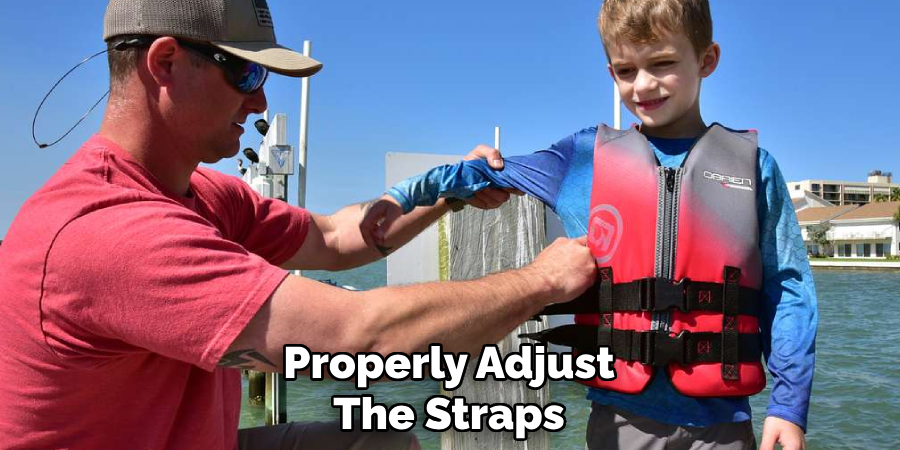
After tightening, check that the life jacket stays in place by gently pulling up the shoulder straps; if it rides up over your chin or ears, it needs further adjustment. A well-fitted life jacket is crucial for both comfort and safety, so take time to make precise and careful adjustments.
Step 4. Secure All Fasteners
Once the life jacket is appropriately positioned and adjusted, securely fasten all buckles, straps, and zippers. Start from the bottom and work upward to ensure a snug fit. Double-check that each fastener is fully locked and not loose or misaligned. Properly secured fasteners prevent the life jacket from shifting or coming undone during use, providing maximum safety and stability. Take a moment to tug each fastener to confirm it is secure gently.
Step 5. Test the Fit
Once all fasteners are secured, testing the fit of the life jacket is essential. Begin by gently pulling up on the shoulder straps; the life jacket should not slide up past your chin or ears. If it does, adjust the straps for a tighter fit. Next, perform a range of motion by moving your arms and twisting your torso to ensure the life jacket doesn’t restrict movement while still staying snug. The life jacket should feel secure but comfortable, allowing you to breathe and move freely.
Step 6. Conduct a Buoyancy Test
A buoyancy test is crucial to ensure your life jacket will perform effectively in an emergency. To conduct this test, find a safe, supervised area such as a swimming pool, calm lake, or other controlled water environment. Put on your life jacket correctly, ensuring all straps and zippers are secured. Enter the water slowly and allow yourself to float naturally.
Your chin and mouth should remain above the water surface without tucking your head back. If you struggle to stay afloat or water is reaching your face, your life jacket may not provide adequate buoyancy or require further adjustment.
Step 7. Recheck Before Use
Before heading out to enjoy your water activity, take a moment to recheck your life jacket. Ensure that all buckles, zippers, and straps are securely fastened and show no wear or damage. Verify that the life jacket fits snugly but comfortably, without restricting movement or breathing. If the coat feels loose or shifts excessively, adjust the straps accordingly. Additionally, inspect for any tears, frayed stitching, or compromised foam, as these factors can reduce the effectiveness of your life jacket.
Step 8. Wear the Life Jacket at All Times
Wearing your life jacket at all times while on or near the water is crucial for your safety. Accidents can happen unexpectedly, and a properly worn life jacket significantly increases your chances of survival in emergencies. Whether you’re a strong swimmer or not, turbulent waters, strong currents, and sudden falls can put anyone at risk. Make it a habit to secure your life jacket before stepping onto a boat, dock, or any area near the water.
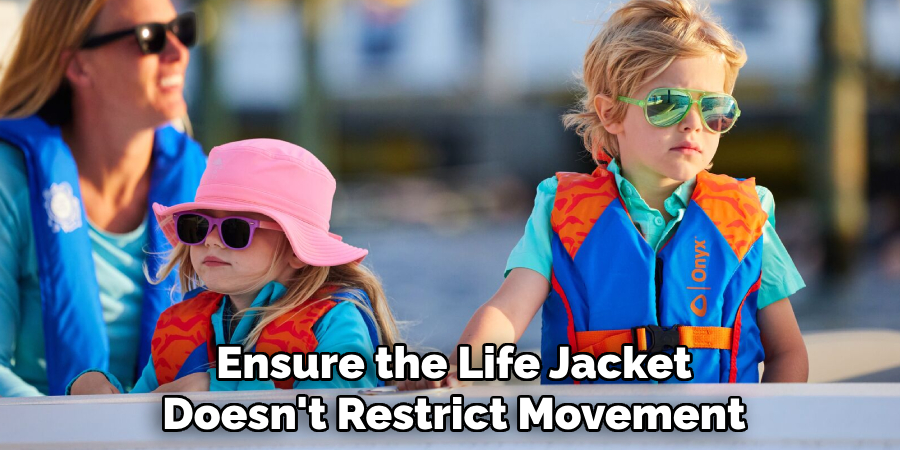
Step 9. Practice Safe Behavior
Practicing safe behavior around water is essential to prevent accidents and ensure everyone’s wellbeing. Always remain vigilant and aware of your surroundings, avoiding distractions like using your phone near the water. Follow posted signs and warnings, respect designated swimming areas, and avoid risky maneuvers or stunts that could endanger yourself or others. Additionally, never consume alcohol while operating a boat or participating in water activities, as it impairs judgment and coordination.
Step 10. Maintain and Store Properly
Proper maintenance and storage of water equipment are crucial for longevity and safety. After each use, thoroughly rinse your gear with fresh water to remove salt, sand, or other debris that may cause corrosion or damage. Inspect equipment regularly for wear and tear, such as cracks, loose parts, or fraying, and address any issues promptly.
When storing your equipment, ensure it is clean, dry, and placed in a cool, dry space away from direct sunlight to prevent deterioration. For larger items like boats or paddleboards, use appropriate covers and secure storage solutions to protect them from weather elements.
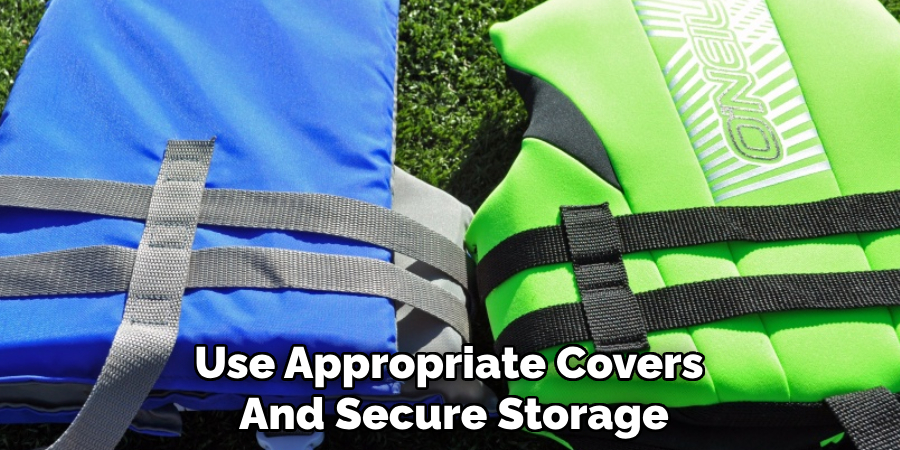
By following these maintenance tips, your equipment will last longer and perform better, giving you more time to enjoy your water activities.
5 Things You Should Avoid on how to use a life jacket
- Using the Wrong Size
Avoid wearing a life jacket that is too small or too large for your body size. An improperly fitted life jacket may not function effectively in keeping you afloat or may come off in the water.
- Failing to Inspect Before Use
Always check your life jacket for any signs of wear and tear, such as rips, broken straps, or malfunctioning buckles. Using a damaged life jacket can compromise your safety.
- Wearing It Incorrectly
Make sure to wear the life jacket as intended and fasten all straps and buckles securely. Wearing it loosely or out of alignment can reduce its effectiveness.
- Relying on an Outdated or Non-Coast Guard Approved Jacket
Avoid using life jackets that are not approved by regulatory authorities such as the U.S. Coast Guard. Outdated or uncertified models may not meet safety standards.
- Neglecting to Wear It at All Times Near Water
Do not assume you do not need a life jacket, even if you are a strong swimmer or in shallow water. Accidents can happen unexpectedly, and a properly worn life jacket can save your life.
Conclusion
How to use a life jacket correctly is essential for ensuring your safety in and around water.
Always select a properly fitting, U.S. Coast Guard-approved life jacket that suits your activity type. Inspect your life jacket regularly for any wear or damage to ensure it remains in good condition. Most importantly, wear your life jacket at all times when near or on the water, as emergencies can arise without warning.
By following these guidelines, you increase your chances of staying safe while enjoying water-based activities. Thank you!

